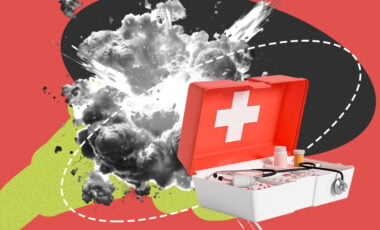Russian missile strikes cause petroleum product spillage into Dnipro River
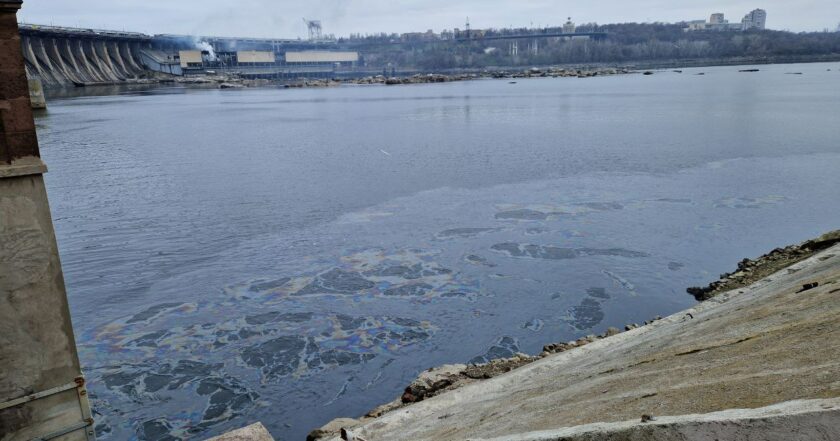
Photo: Telegram / State Inspectorate of the Southern District
Russian rocket strikes on the Dnipro Hydroelectric Power Plant (HPP) on March 22 caused a leakage of petroleum products into the Dnipro River.
Both parts of the power station in Ukraine's southeastern city of Zaporizhzhia ceased electricity production. The Dnipro hydroelectric station-2 (HES-2) is in critical condition, Rubryka reports, citing Ukraine's State Environmental Inspectorate.
Experts took water samples from the river for laboratory tests and also recorded soil contamination due to the Russian attack.

Photo: Telegram / State Inspectorate of the Southern District
Some areas in the city were polluted by the debris from the Dnipro HPP destruction:
- Over 7,200 square meters on Slavutycha Street,
- Over 300 square meters on Petra Sahaidachnoho Street.
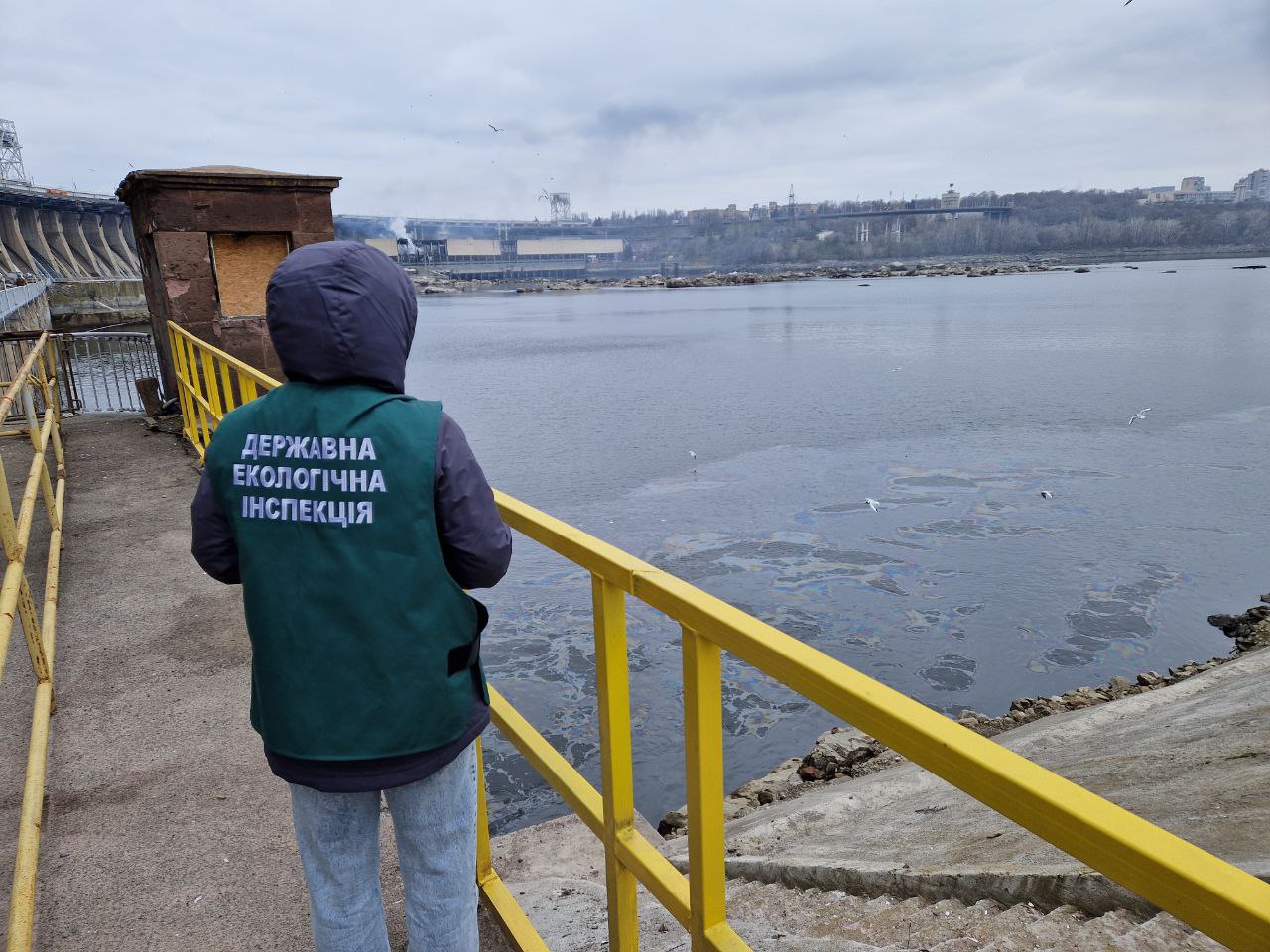
Photo: Telegram / State Inspectorate of the Southern District
Eight Russian missiles hit the hydroelectric power station; it was disabled. There is no danger to citizens, Yurii Belousov, a Prosecutor General's Office spokesperson, said during a telethon broadcast.
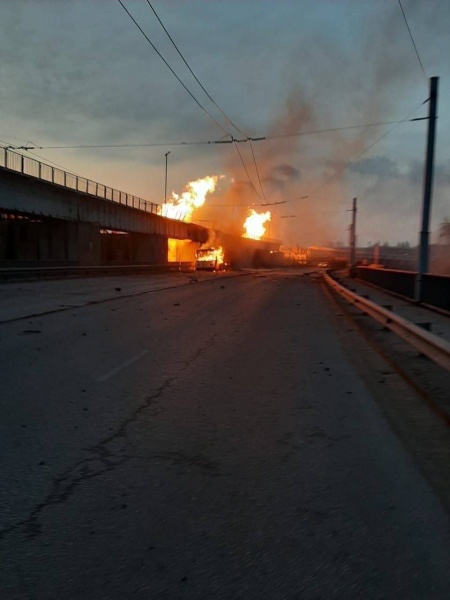
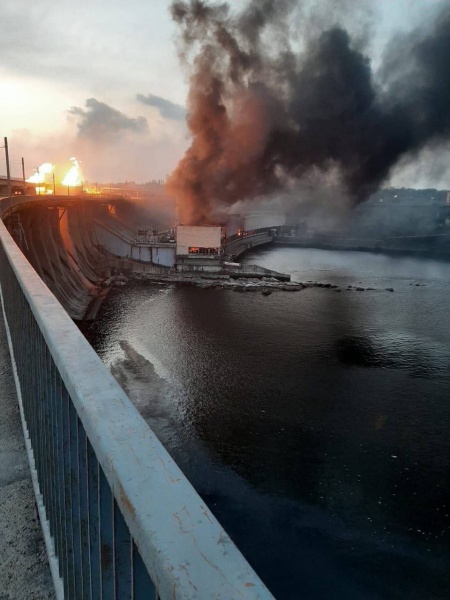
"There were hits on HES-2 and HES-1," said Ihor Syrota, CEO of the Ukrainian state electricity operator Ukrhydroenergo.
He reported that a final assessment of the attack's consequences for HES-2 cannot be provided yet, but there is no threat of a dam breach.
"Two rockets hit HES-2 directly. One rocket hit the crane beams and struck a support. HES-2 is now in critical condition, and HES-1 is also not operational," said the head of Ukrhydroenergo.
According to him, hydroelectric power engineers are taking measures to raise the gates and release water from the reservoir.
"We will assess the consequences throughout the day and understand whether [HES] can operate. If it can, then maybe in a limited mode," said Syrota.
He also noted that there were no Ukrhydroenergo employees in the trolley bus that was on the dam of DniproHES at the time of the strike.
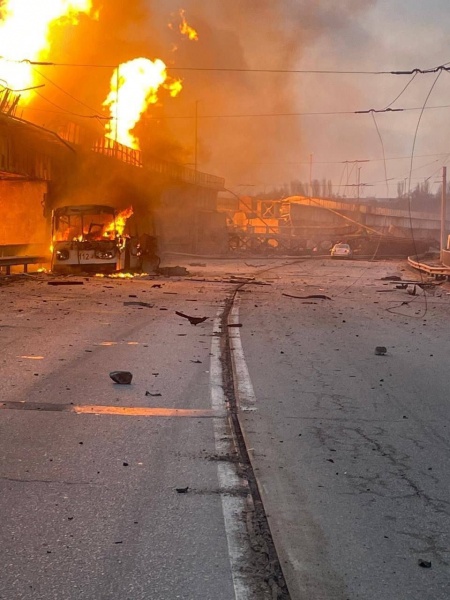
wikipedia.org
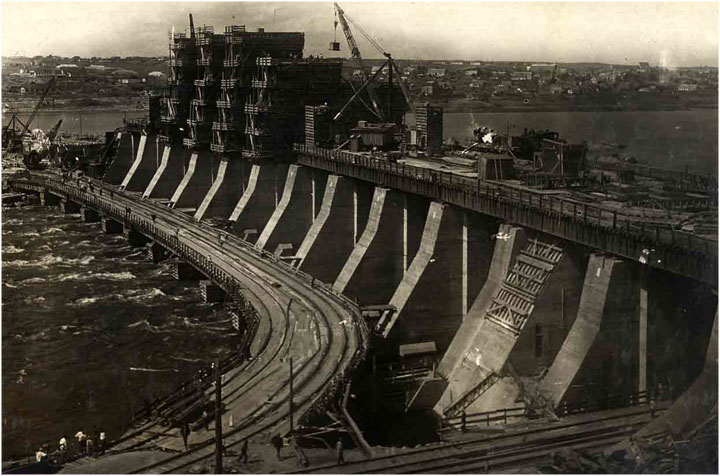
Photo: wikipedia.org
The Dnipro Hydroelectric Power Station is the first hydroelectric power station built on the Dnipro River. It is the largest hydroelectric power station in Ukraine, located in the Dnipro district of Zaporizhzhia.
Construction of the Dnipro HPP began in March 1927, and within five years, it was first put into operation, reaching full capacity by 1939.
During the Second World War in 1941, Dnipro HPP was shut down. The Soviet interior ministry NKVD blew up the dam after receiving information about the breakthrough of German troops. After the dam explosion, the breach was 175.5 meters long and 21.2 meters high. A six-meter wave flooded riverbank areas. Thousands of people died as a result of the explosion, and the exact number of casualties could not be determined.
The German occupiers partially restored Dnipro HPP and put it into operation. In 1943, the retreating German troops destroyed the power plant's turbine hall, shield wall, and dam. The station was rebuilt from 1944 to 1950.
Construction of the second station, DniproHES-2, began in 1969. The station's launch was gradual; by 1980, it was fully operational.
As of January 2022, the station's installed capacity is 1578.6 MW. Dnipro HES-1 has ten hydro units, and Dnipro HES-2 has eight hydro units.
On October 31, 2022, Russian troops struck Dnipro HPP during a massive attack on Ukraine's energy infrastructure. At that time, a missile hit the electrical substation of DniproHES.
Massive Russian attack on March 22
On Friday, March 22, the Russian army deployed the Tu-95MS strategic bombers, which launched Kh-101/555/55 cruise missiles at Ukraine. Explosions were heard in several Ukrainian cities. Air defense systems were operational, but there were hits in several cities, including critical infrastructure facilities.
Russian troops attacked the northeastern city of Kharkiv with ballistic missiles, with about 15 explosions reported in the city. They targeted the energy infrastructure, causing a power outage and water supply problems.
During the Russian massive attack, Zaporizhzhia was rocked by 12 explosions. Uhtoritird reported casualties; seven buildings were destroyed, and dozens were damaged.
The Russian forces targeted the Dnipro HPP. The occupied Zaporizhzhia Nuclear Power Plant (ZNPP) is threatened by a blackout; the line to ZNPP is de-energized.
Power outages are also reported in the Dnipro, Poltava, and Sumy regions in Ukraine's center and north. Hits on critical infrastructure facilities are recorded in Ivano-Frankivsk, Vinnytsia, Mykolaiv, and Odesa regions in the west and south of the country. In several regions, power outage schedules have been introduced.
The massive attack on Zaporizhzhia killed at least one person and injured eight. Casualties are also reported in the western Khmelnytskyi region. People are being searched for under the rubble of the destroyed building.
Overall, the Russian forces launched over 150 drones and missiles of various types across Ukraine on March 22. Air defense forces downed 55 "Shahed" drones and 37 missiles.
The massive Russian strike on Ukraine overnight killed at least five people and injured 14–16 people. Three are considered missing.






























